Removal Procedure
- Relieve the fuel system fuel pressure. Refer to Fuel Pressure Relief .
- Drain the fuel tank. Refer to Fuel Tank Draining .
- Remove the fuel sender assembly. Refer to Fuel Sender Assembly Replacement .
- Raise the vehicle. Refer to Lifting and Jacking the Vehicle in General Information.
- Loosen the fuel tank filler hose clamp (1) at the fuel tank (3).
- Disconnect the fuel tank filler hose from the fuel tank.
- Disconnect the quick-connect fittings at the fuel tank. Refer to Metal Collar Quick Connect Fitting Service .
- Disconnect the evaporative emissions (EVAP) pipe from the connection at the front of the fuel tank.
- Remove the rubber exhaust pipe hangers in order to allow the exhaust system to drop slightly.
- With the aid of an assistant, support the fuel tank, and remove the fuel tank strap attaching bolts which retain the fuel tank straps.
- Disconnect the EVAP pipes (4) from the rear of the fuel tank.
- Disconnect the EVAP pipe (2) from the fuel limiter vent valve.
- Disconnect the fuel filler neck EVAP pipe (3) at the rear of the fuel tank.
- Remove the fuel tank from the vehicle, and place the fuel tank in a suitable work area.
- If the fuel tank is not being replaced, refer to Fuel Tank Installation Procedure.
- Remove the following components from the fuel tank:
- Remove the fuel limiter vent valve from the fuel tank. Refer to Fill Limiter Vent Valve Replacement .
- Remove the insulator pads from the fuel tank. Note the location of the insulator pads for installation.
Notice: Cap the fittings and plug the holes when servicing the fuel system in order to prevent dirt and other contaminants from entering the open pipes and passages.
Notice: Do not bend the fuel tank straps as this may damage the straps.
Notice:
• Do not attempt to straighten kinked nylon pipes. Replace any kinked
nylon pipes in order to prevent damage to the vehicle. • Do not attempt to repair sections of nylon pipes. Replace damaged
nylon pipes. • Replace the vapor pipes with original equipment or parts that
meet GM specifications. • Replace the vapor hoses with original equipment or parts meeting
GM specifications. Use only reinforced fuel-resistant hose identified with
the word Fluoroelastomer or GM 6163M on the hose.
Caution: To avoid any vehicle damage, serious personal injury or death when major components are removed from the vehicle and the vehicle is supported by a hoist, support the vehicle with jack stands at the opposite end from which the components are being removed and strap the vehicle to the hoist.
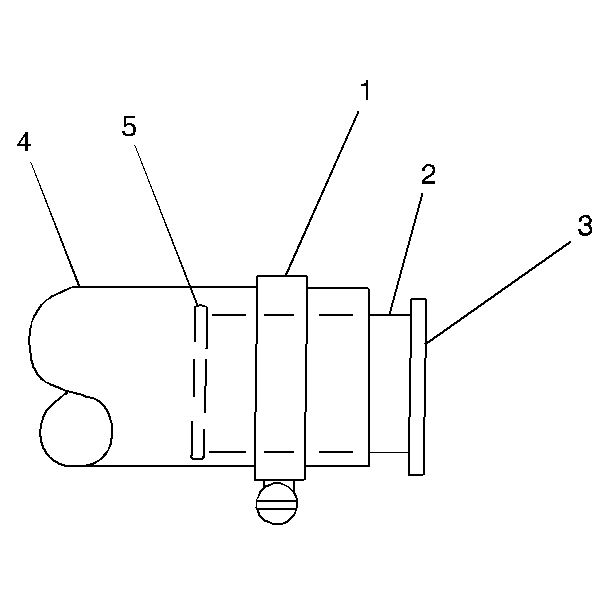
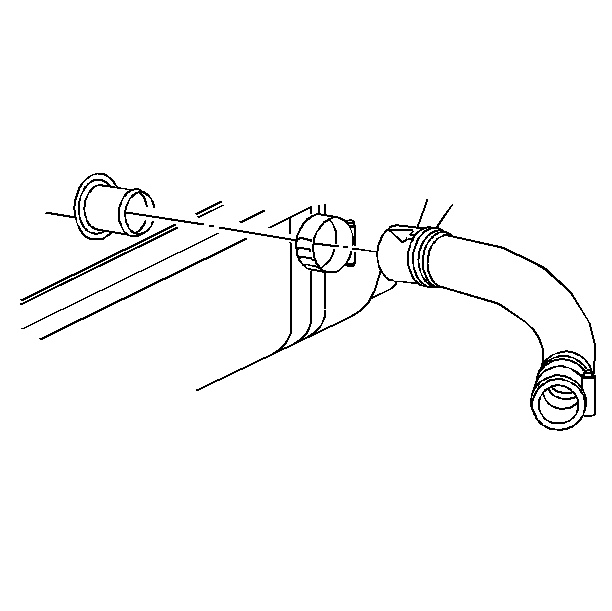
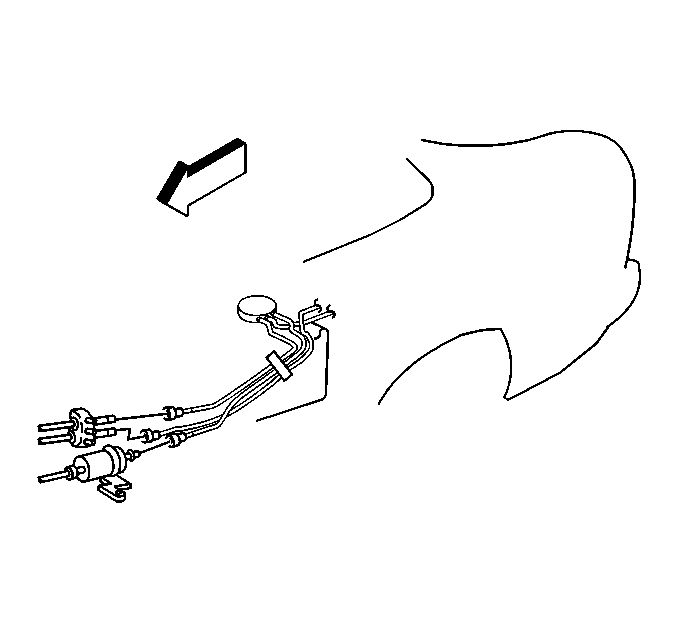
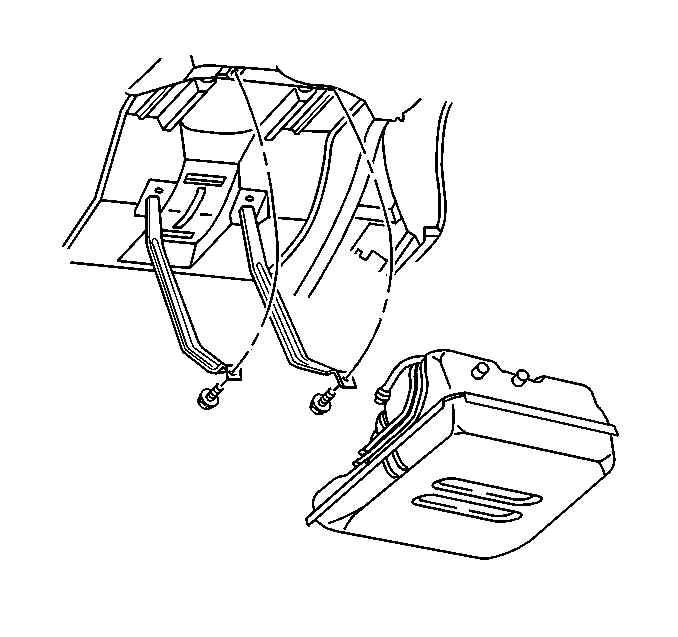
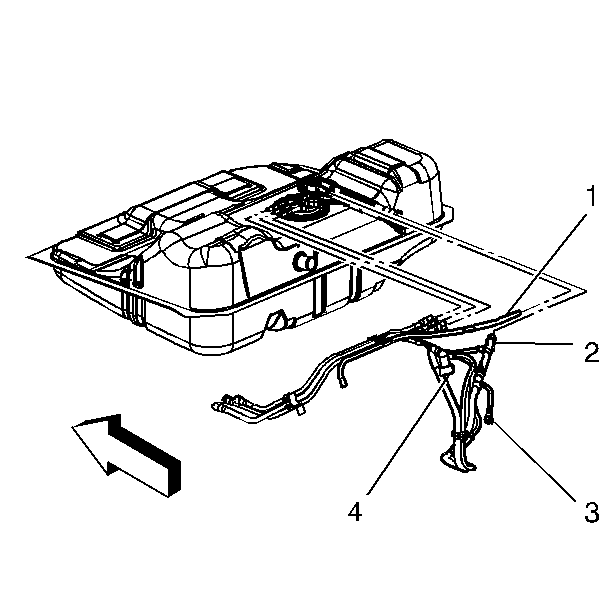
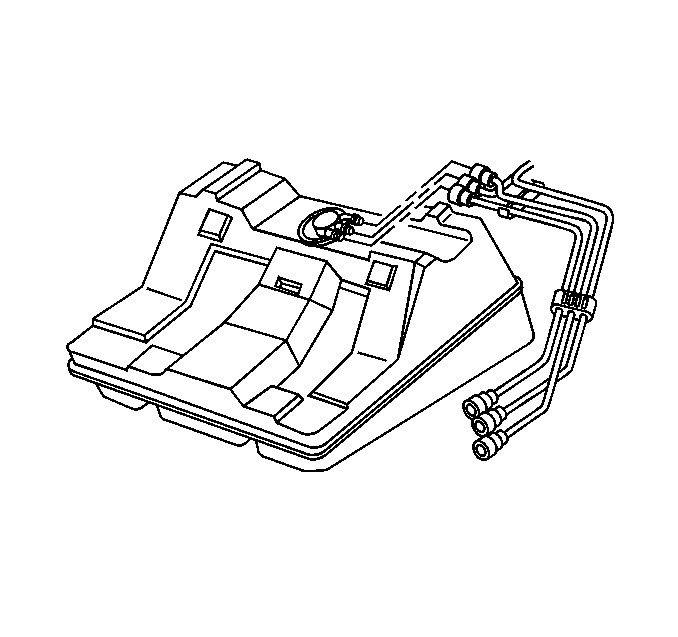
| • | The fuel feed |
| • | The fuel return |
| • | The EVAP pipe assemblies |
| • | The insulator clips |
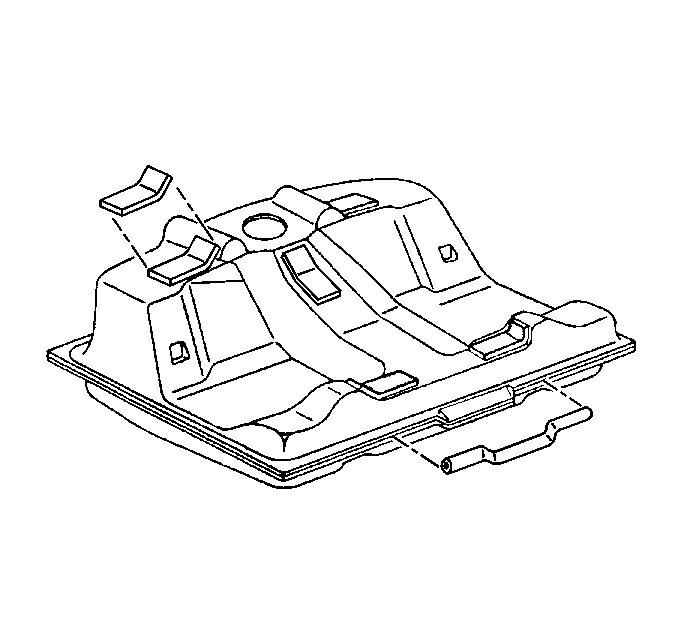
Installation Procedure
- Install the insulator pads on the fuel tank.
- Install the fill limiter vent valve. Refer to Fill Limiter Vent Valve Replacement .
- Connect the fuel feed, the fuel return, and the EVAP pipe assemblies. Install the insulator clips.
- With the aid of an assistant, position and support the fuel tank.
- Connect the EVAP pipes (4) to the rear of the fuel tank.
- Connect the EVAP pipe (2) to the fuel limiter vent valve.
- Connect the fuel filler EVAP pipe (3) at the rear of the fuel tank.
- Install the fuel tank retaining strap attaching bolts.
- Connect the quick-connect fittings at the fuel tank. Refer to Metal Collar Quick Connect Fitting Service .
- Connect the EVAP pipe at the front of the fuel tank.
- Connect the fuel tank filler hose to the fuel tank.
- Inspect and ensure that the filler hose (4) is fully seated on fuel tank port (2).
- Ensure that the clamp (1) is properly located on tank port between the bead (5) and the tank (3).
- Install the rubber exhaust pipe hangers.
- Inspect the fuel and the EVAP pipes. Ensure that the pipes were not kinked or damaged during removal and installation.
- Lower the vehicle.
- Install the fuel sender assembly. Refer to Fuel Sender Assembly Replacement .
- Add the fuel and install the fuel fill cap.
- Connect the negative battery cable. Refer to Battery Negative Cable Disconnection and Connection in Engine Electrical
- Use the following procedure in order to inspect for leaks:
- Install fuel injection sight shield. Refer to Fuel Injector Sight Shield Replacement in Engine Mechanical.


Notice: Do not attempt to straighten any kinked nylon fuel lines. Replace any kinked nylon fuel feed or return pipes in order to prevent damage to the vehicle.


Notice: Use the correct fastener in the correct location. Replacement fasteners must be the correct part number for that application. Fasteners requiring replacement or fasteners requiring the use of thread locking compound or sealant are identified in the service procedure. Do not use paints, lubricants, or corrosion inhibitors on fasteners or fastener joint surfaces unless specified. These coatings affect fastener torque and joint clamping force and may damage the fastener. Use the correct tightening sequence and specifications when installing fasteners in order to avoid damage to parts and systems.
Tighten
Tighten the front fuel tank retaining strap bolts to 47 N·m
(35 lb ft).



Notice: Use the correct fastener in the correct location. Replacement fasteners must be the correct part number for that application. Fasteners requiring replacement or fasteners requiring the use of thread locking compound or sealant are identified in the service procedure. Do not use paints, lubricants, or corrosion inhibitors on fasteners or fastener joint surfaces unless specified. These coatings affect fastener torque and joint clamping force and may damage the fastener. Use the correct tightening sequence and specifications when installing fasteners in order to avoid damage to parts and systems.
Tighten
Tighten the fuel tank filler pipe hose clamp to 2.5 N·m
(22 lb in).
| 20.1. | Turn ON the ignition, for 2 seconds. |
| 20.2. | Turn OFF the ignition, for 10 seconds. |
| 20.3. | Turn ON the ignition. |
| 20.4. | Inspect for fuel leaks. |
